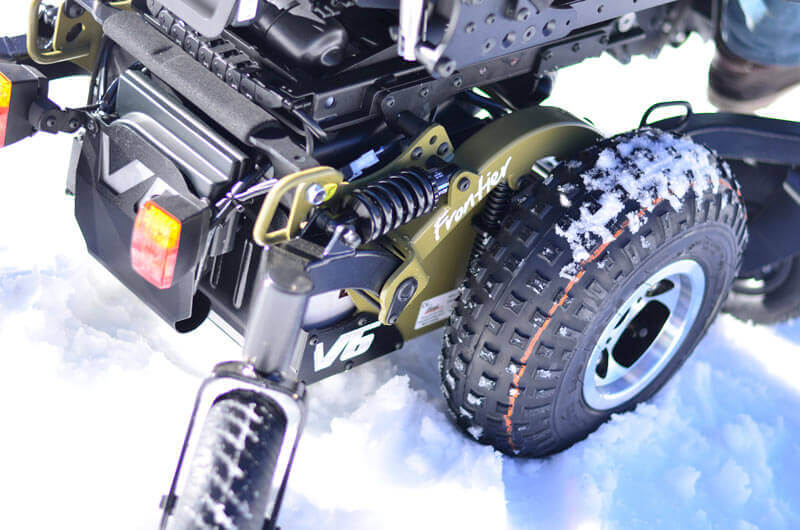Growing up near the Blue Ridge Mountains in Virginia in the 1980s, it was very common for my parents to tell my siblings and me to "go outside, the weather it beautiful" whenever we asked if we could watch television. Throughout the COVID-19 pandemic I have noticed some distinct messages from health professionals that have reminded me of my parents' directions to go outside and play. The likelihood of infection is significantly decreased when people are outside versus inside, and taking care our mental health through leisure activities can be a gamechanger.
For decades, engaging in leisure and recreational activities has been linked to a myriad of physical and mental health benefits for people of all ages, no matter their abilities or disabilities in peer-reviewed journals, medical publications, and the World Health Organization. With that said, it's not surprising many individuals with physical disabilities list being able to participate in a specific recreational activity as one of their primary goals related to seeking a wheeled mobility device. So, how do we help our clients who utilize a wheelchair for mobility meet their goal of getting into and around the great outdoors independently? While there are some add-on devices available on the market for manual wheelchairs, in this blog we will be focused on all-terrain power wheelchairs.

Starting Point
As with recommending other power wheelchairs, in order to get the best outcomes when helping a client select an all-terrain power wheelchair, it is important to complete a thorough evaluation that includes establishing goals, a client interview, a hands-on postural assessment, and an equipment trial. Here are a few additional points to consider:
Goals & Client Interview - important questions to include
- What types of activities does the client expect the all-terrain power wheelchair to allow them to do?
- Hunting
- Fishing
- Hiking
- Farm chores
- Etc.
- What types of terrain does the client need the all-terrain power wheelchair to perform in?
- Woods
- Mountains
- Beach
- Pasture
- Gravel
- Mud
- Non-blazed trails
- How does the user plan to transport the all-terrain wheelchair?
- What previous and current everyday mobility equipment does the client use?
Hands-On Postural Assessment - items to think about
- Keep in mind the impact the terrain could have on the client's ability to maintain the appropriate posture.
- How often and for how long does the client plan to use the all-terrain power wheelchair?
- Is power seating, such as tilt, recline, elevating leg supports, and seat elevate, needed?
Equipment Trial
- You may have to think outside typical clinic settings to make adequate recommendations so the client can experience driving an all-terrain power wheelchair.
- Try to select a location for the test drive that simulates where the client would like to use the wheelchair.
Feature Matching
This portion of the evaluation process is when the evaluating team matches the client's specific clinical needs and goals to products that are on the market. Encourage the individual to review information found online such as the Magic Mobility section of the Sunrise Medical website.
Since all-terrain power wheelchairs are designed to be utilized for different purposes than an everyday power wheelchair, it is good to have an understanding of the various features of each all-terrain power wheelchair option including drive wheel position, tire material, number of motors, size, turning radius, etc.
Securing the Proper Device
While many individuals, physicians, clinicians, and mental health professionals agree that having access to equipment to engage in recreational activities is medically necessary, some funding sources would disagree. Simply knowing that a piece of mobility equipment is not coded by the Centers for Medicare & Medicaid Services often leads clinicians and equipment providers to shy away from recommending the device, because funding could be an obstacle. However, it is possible for individuals to secure alternative funding for these types of wheelchairs.
Here are a few ideas you and your clients can look into when it comes to alternative funding:
- Personal
- Ask friends and family to give money towards the cost of an all-terrain power wheelchair in lieu of holiday and/or birthday gifts
- As with saving for any purchase, clients can create a personal savings plan and utilize a high-yield account to reach their goals. A financial advisor or financial institution might be able to assist your clients with creating a plan.
- Affordable financing options through state Assistive Technology Act loan programs. Find your state AT Act program here.
- Thanks to social media, crowdfunding sites have become popular. If clients decide to go this route, be sure to have them read the fine print and guidelines, as each platform is different.
- Charitable organizations focused on areas including:
- Wish granting
- Adaptive recreation and sports
- Diagnosis-specific
- Age group-specific – children and seniors
- Veterans
- Farming and agriculture
- Accessibility-related
- Exploring the outdoors and nature
- Assistive Technology
- Veterans Affairs
- Department of Vocational Rehabilitation – specifically related to jobs requiring all-terrain power wheelchairs such as farming
As mentioned above, participating in recreational and leisure activities is essential to the overall health of everyone, so be sure to take time to get outside and explore your world soon!
Thank you for reading our blog! We love hearing from you, so please do not hesitate to reach out to us. We encourage you to leave a comment below.
Always remember at the end of the day, your client is your number one priority!
- Angie
Follow Angie on Twitter @ATigerKiger